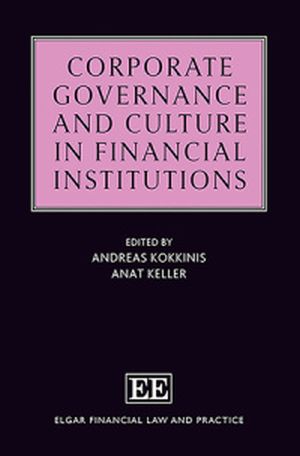We are now closed for the Christmas and New Year period, returning on Monday 5th January 2026. Orders placed during this time will be processed upon our return on 5th January.

Financial institutions raise unique problems for corporate governance and culture that are not found in other corporate sectors. This book examines the various forms of organisational culture in financial institutions and its interplay with corporate governance and regulatory regimes. It provides a detailed survey and practical examination of key topical issues in the corporate governance and culture of financial institutions including boards and regulators, executive remuneration, ESG, regtech and AI.
Bringing together experts from a range of financial service professions as well as academia, the book explores how post-crisis executive remuneration, risk management and the function of boards have attracted the attention of regulators. It provides practical guidance on how to navigate the regulatory framework and how to implement best practice in corporate governance and culture into financial institutions.
Key Features:
Corporate Governance and Culture in Financial Institutions is an essential resource for practising lawyers advising in the financial services sector, culture officers and HR professionals in financial institutions. Its discussions on diversity and compliance are also greatly beneficial to financial policymakers and regulators, as well as students and academics in corporate law and banking law.